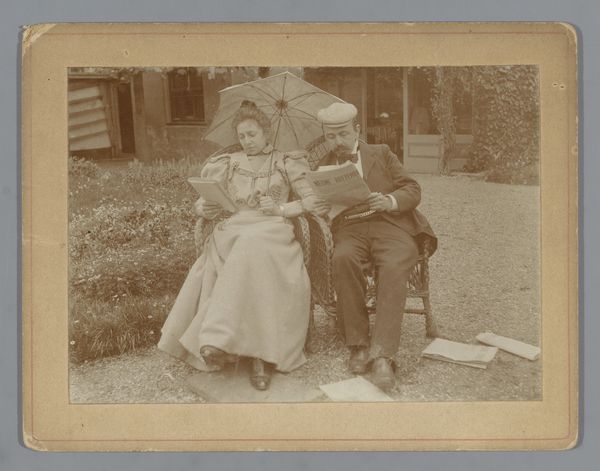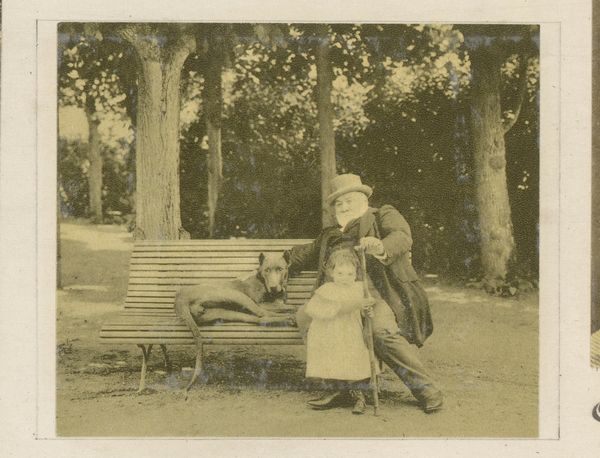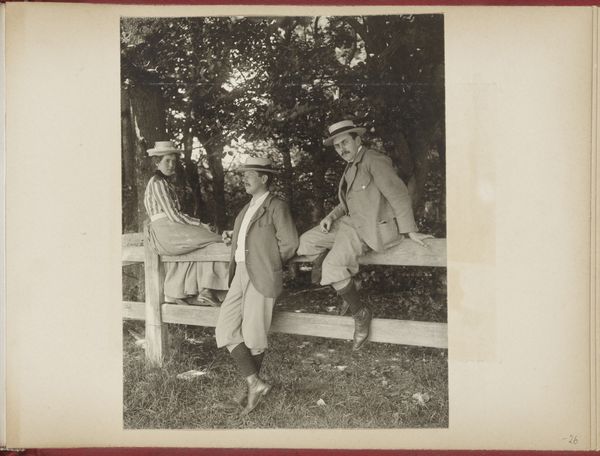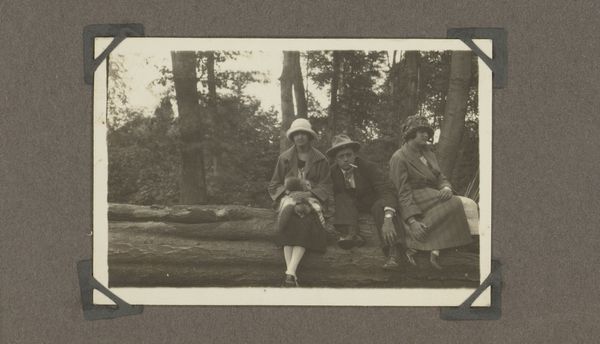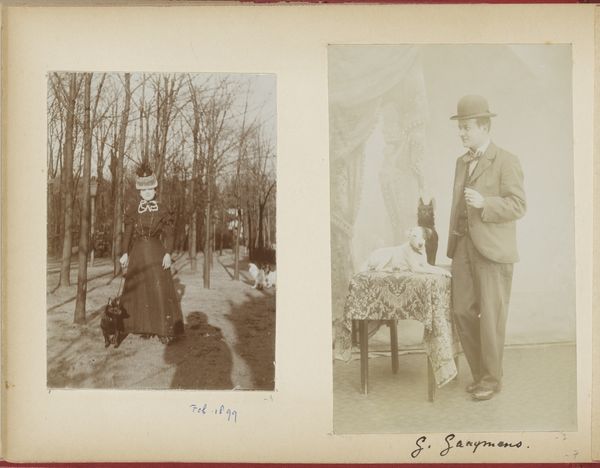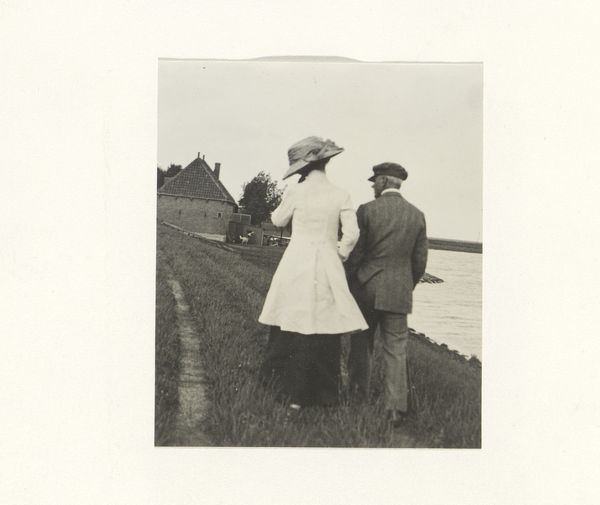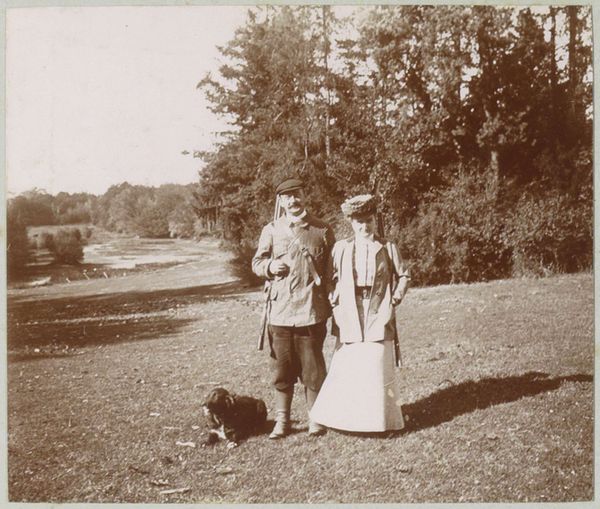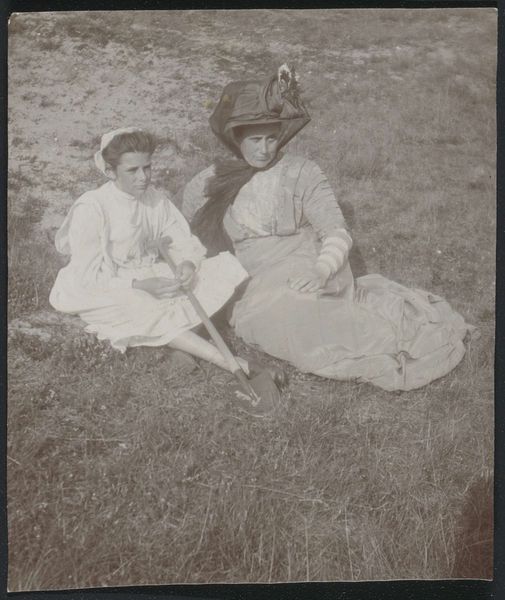
Jong stel, vrouw met hoed met veren, in aanminnige houding op een bankje in een park, man gluurt vanachter een boom, fotoverhaal 1 1899
0:00
0:00
Dimensions: height 172 mm, width 256 mm
Copyright: Rijks Museum: Open Domain
Curator: So, what strikes you first about this photograph? To me, it has the quiet, staged romance you see in those late 19th century postcards. Editor: What strikes me is how… awkward it is! The couple seems posed and stiff. Are they happy? Then, off to the side—surprise!—is a lurking figure, half-hidden behind a tree. It is hilarious, yet also a bit sad. Curator: It's interesting you say that. What you're looking at is a photograph called "Jong stel, vrouw met hoed met veren, in aanminnige houding op een bankje in een park, man gluurt vanachter een boom, fotoverhaal 1", created around 1899 by Gerard(us) Aalbersberg. Editor: That title! "Loving pose," huh? Well, I suppose someone *thought* it was loving! You know, the more I look at it, the more it seems like a stage set for some unspoken drama. Like a still from a silent film comedy. The lighting gives it a dream-like quality. Curator: Indeed. Given that it’s a photograph dating from 1899, there's a constructed quality here we should expect. Photographers then often drew on theatrical traditions in how they arranged their subjects. What is unique here is that extra figure. Editor: That peeping Tom…he could represent doubt, suspicion. Perhaps it symbolizes the fragility of appearances in a society obsessed with propriety. Or maybe he is just being nosey. I find it strangely compelling, like a riddle wrapped in sepia tones. It teases at something. Curator: Absolutely. By the late 19th century, romanticism infused with sentimental and genre themes were popular, particularly in portraying courtship rituals among the bourgeois. While photographic technology advanced, what to depict remained deeply rooted in painting, with emphasis placed on ideals like idyllic innocence, threatened by moral corruptions from figures such as this "gluurder". Editor: This image sparks the desire for telling stories and filling in unspoken backstories of strangers, even now, as we look at faces across a century’s divide. Art, regardless of intention, somehow still succeeds when it does this. Curator: It reveals to us our ever changing public selves, through our past public selves. Editor: Well said. An awkward image with so much to unravel.
Comments
No comments
Be the first to comment and join the conversation on the ultimate creative platform.


